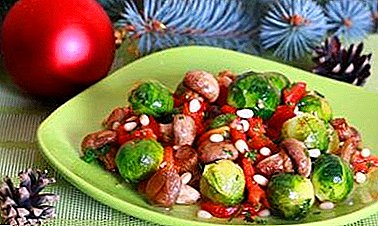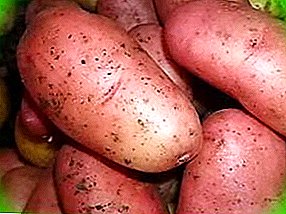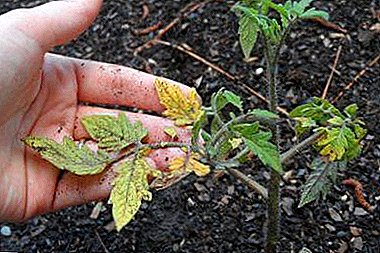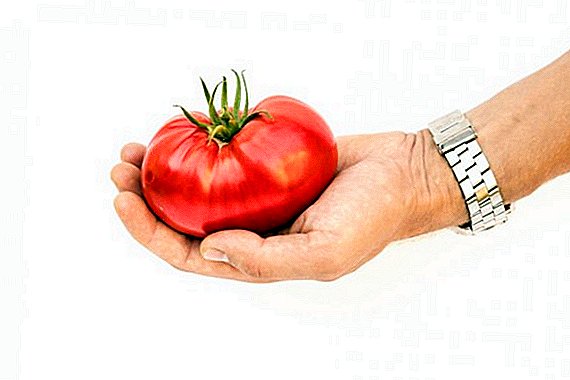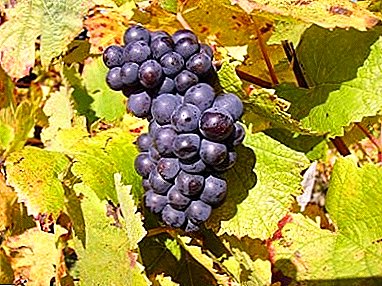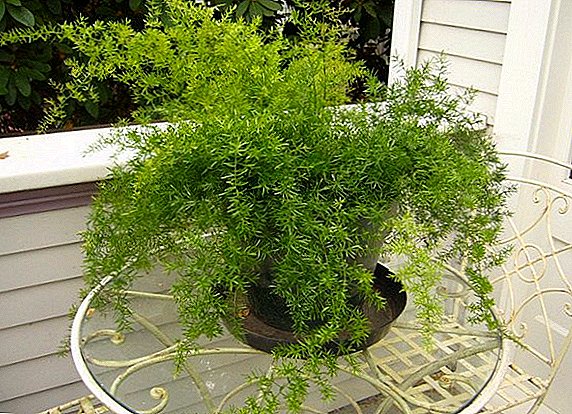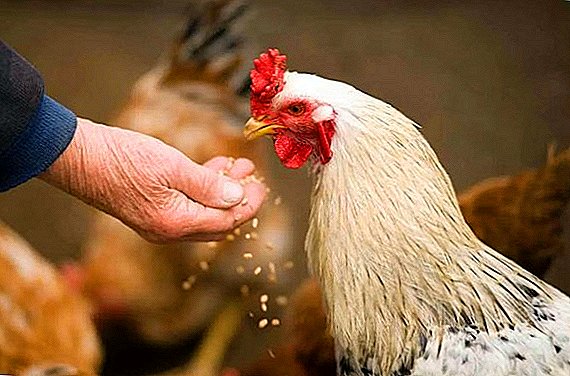 Compliance with the correct diet of chickens is the main guarantee of their good health, level of egg production, as well as the quality of food material. In this article, we will analyze the data on what products can feed poultry, and which ones should be discarded (taking into account the reasons for which one should act one way or another).
Compliance with the correct diet of chickens is the main guarantee of their good health, level of egg production, as well as the quality of food material. In this article, we will analyze the data on what products can feed poultry, and which ones should be discarded (taking into account the reasons for which one should act one way or another).
Is it possible to give chickens the following products
We all know that domestic birds, mostly chickens, are almost omnivorous creatures. It is for this reason that many poultry farmers, especially beginners, think that in exchange for purchased feeds, you can feed these birds with the most common provisions, even from the master's table. As the practice of feeding chickens demonstrates, in this process certain products should be treated very carefully, and some should be avoided altogether. Consider specifically the list, whether it is possible to give the chickens the following products.
Learn how to make a competent diet for a layer.
Needles or pine branches
This needle-shaped organ of trees and shrubs of the spruce and pine genus is for any kind of bird a unique vitamin carrier containing valuable biological substances. Fat pigment carotene, as well as vitamins F, tocopherol and ascorbic acid have a positive effect on the rate of development and overall health of chickens, as well as on the productivity of layers.
Poultry as food can be given both fresh and dried shredded pine trees or pine needles. The optimal portion of coniferous material for adult chickens - from 6 to 10 g per 1 head.
Hercules
Hercules are hydrothermally processed oat flakes mechanically peeled from the husk. And since chickens not only can be fed with oats, but also need to be fed, this rule also applies to Hercules.
The latter contains the main substances vital for the chicken, micro and macro elements. The amount of protein that is part of this cereal affects the growth of muscle mass. Hercules are better than ordinary oats because the husked cereal content of fiber significantly decreases, thus facilitating and speeding up the process of assimilation of the product by the chicken body.
The dosage of hercules in the diet of chickens should be very clear and be no more than 10-20% of the total daily volume of food (grain elements in conjunction with the plant).
Find out whether it is possible to give and in what quantities garlic, foam plastic, bread, bran, wheat germ, fish oil to chickens.
Banana peel
The banana itself rarely acts as a representative of the chicken menu, although veterinarians do not mention the dangers of this product for birds. But a banana peel or peel from one banana can not be thrown away, but dried, minced and added to the daily dose of poultry feed.

It is important to make sure that there are no stickers or other foreign objects in the detailed banana peel. The substances contained in the peel of this fruit, contribute to the normal operation of the cardiovascular and gastrointestinal systems, as well as clean the chicken body.
Did you know? The image of domestic chicken was applied to the coins of 16 countries, among them - Bangladesh, Ireland, etc.
Rape
In terms of the total fat and protein composition, rapeseed is superior to soybeans and other leguminous crops. Nevertheless, the final products obtained from rape - cake and meal - can be used as an additive to poultry feed. only in limited quantities (up to 5-8% of the total menu) due to the presence of glucosides in them that can provoke intoxication of the organism of the chicken.
Slaked lime
The presence of minerals in the feeding of birds is of considerable importance, and because of the insufficient amount of them in natural feeds, poultry farmers need to carry a special mineral fertilizer.
 Lime is added to feed to prevent eggs from slamming.
Lime is added to feed to prevent eggs from slamming.
Calcium replenishment in the body of a bird can be accomplished with the use of a long-standing (time spent on air must be at least 6 months) hydrated lime. A freshly hooded or one that has not been quenched at all is strictly forbidden to be consumed by chickens: it can cause burns of the gastrointestinal tract, and even lead to the death of the bird.
Limestone is added to feed for birds. at a dosage of 5% of the total mass of food.
Find out what you can give chickens.
Millet
Millet groats are very useful, easily digestible and nutritious product for chickens. It is millet that increases their egg production level, since it is rich in vitamin complex (for example, B vitamins, nicotinic acid), as well as useful chemical elements. Dosage of this cereal 30-40% of the total portion and the alternation of wheat with other crops, such as barley, wheat, etc., are the basic rules for the use of this component of chicken nutrition.
Kefir
This fermented milk product in the nutrition of chickens is usually used as one of the components of mash meat and is a protein feed of animal origin. Due to the presence in its composition of beneficial microorganisms, kefir has a beneficial effect on the digestive system of the bird.
 With the same success, kefir can be replaced with yogurt
With the same success, kefir can be replaced with yogurt
The product also has antibacterial properties, and therefore enhances the protective functions of the avian organism.
A portion of kefir, which is filled with a mixture of feed ingredients, can vary from 10 to 100 ml, depending on the specific recipes and the number of other components.
Important! The digestive system of the chicken is not able to digest and absorb the nutrients of salty and sweet foods, so the latter must be completely excluded from the avian diet.
Pork feed
Compound feed intended for pigs can also be given to chickens, since it is universal in its composition and is suitable not only for piglets, but also for chickens, as well as for rabbits. Feeding standards for pork feed are similar to the nutritional standards for chicken combined feed.
Milk serum
The structure of whey includes many useful substances, among which calcium, magnesium, disaccharides, vitamins of group B, retinol, ascorbic acid, vitamin A, etc. can be mentioned.
 Use only fresh serum, a long-standing product can cause poisoning.
Use only fresh serum, a long-standing product can cause poisoning.
That is why it is the same as kefir, often used as a liquid element of mash for feeding birds. Proportional use should be consistent with the use of kefir for this purpose.
Learn how to prepare feed for broilers.
Rye
Experts do not recommend feeding domestic birds with rye, especially in large quantities: in chickens, it can cause disorders of the gastrointestinal system, and the mucous substances contained in the freshly harvested grain, can swell up severely, injuring the internal organs of the bird's gastrointestinal tract.
Flax seeds
Flax kernels contain a huge amount of lignins, affecting the work of the hormonal system, which is why this product is most used in the process of feeding laying hens.

Having a beneficial effect on egg-laying, flaxseeds also prevent diseases associated with the reproductive organs of poultry. The desired rate of this dietary supplement is 10 g (if the product has a powdery consistency), or 10-15 grains per individual.
Important! In order to prevent the reverse effect in the reproductive function of birds from the use of flaxseed, in no case should not exceed the daily rate of this product.
Grapes
Grapes are not only not allowed to be given to chickens, but it is also necessary to protect them from the exit to the grape bushes so that they do not gorge themselves on these berries. Their harm is that hydrocyanic acidincluded in the structure of the berries, instantly causes poisoning and severe intoxication of the avian organism. Very often, this is completely fatal.
Radish
Cruciferous roots of the genus cruciferous used as a food additive to poultry feed, but with regard to radish, its amount should be as limited as possible.
 Radish, before giving to chickens, should be finely grated
Radish, before giving to chickens, should be finely grated
The product itself, before mixing with others, must be thoroughly chopped on a grater, while using the secondary element of the root crop - the tops.
An impressive amount of vitamins (A, group B, E, ascorbic and nicotinic acids, etc.), mustard oil, fiber are the main advantages of this root crop.
Familiarize yourself with the technology of making feeders, drinkers, nests, perches for chickens.
Meat broth
Much less often, meat broth is used as a component of the chicken ration. Experts have no special cautions about this broth, except that it is undesirable to use it in its pure form due to the increased amount of mineral salts. Sometimes broth can be diluted mash taking into account the volume of other products.
Citrus fruits, orange and tangerine peels
Experts do not recommend feeding the bird neither the pulp of tangerines or oranges, nor the peel of fruit: they can irritate the stomach lining and seriously disrupt the digestive system. Other members of the citrus family (lime, lemon, grapefruit, pomelo, bergamot) are also contraindicated.

Millet
Along with barley and oats, this cereal culture plays an important role as a food additive in the poultry diet. This is a real storehouse of valuable nutrients, so it is simply necessary to give it to chickens in the form of a mixture based on corn or wheat unpeeled from the grains. The percentage of millet content in the total feed composition should be no more than 20%.
Learn how to feed chickens in the winter for egg production.
Vegetable oil
Fats of plant origin are direct sources of lipids, which are actively involved in the biological synthesis of nutrients, thereby ensuring the best assimilation of vital vitamins and other substances by the avian organism. Adults can add vegetable oil to the mash in the amount of 2-3.5 g of oil per day.
Sunflower oil
Pure sunflower oil, on the contrary, can negatively affect the durability of the shell, and the size of the eggs, and accordingly, the normal functionality of the reproductive organs of poultry. That is why the introduction of sunflower oil into the total weight of the feed should be extremely limited: not more than 1.1%.

At the same time, the addition of oil cakes and sunflower meals in the amount of from 11 to 14 g per day feed laying hens guarantees them increased egg production.
Turnip
Fodder turnip varieties are also can be included in the chicken diet like radish. The fruit contains a huge amount of vitamins (carotene, retinol, thiamine, riboflavin, pantothenic and folic acids, pyridoxine), as well as many useful chemical elements.
Did you know? Every year on the second November Saturday in the Swiss town of Richterschwil on the shores of Lake Zurich, a real holiday is celebrated that has reached European proportions: the Turnip Festival. On this day, townspeople and visitors walk the streets with peculiar lamps in the form of a root crop with small candles inside.
Feed for rabbits
Combined feed for rabbits, according to experts, not suitable for inclusion in avian diets, as it contains a large amount of fiber. Excess of this element can negatively affect the work of the digestive system of chickens.

Yeast
Yeast - not only possible, but also necessary food admixture to the feed of chickens. They include: riboflavin, thiamine, pantothenate and nicotinic acid, protein, other valuable trace elements and enzymes.
These substances are necessary for birds to maintain a strong immune system, increase the functionality of muscles, skeleton, heart and blood vessels, normal internal biologic exchange, growth and development of the organism.
A portion of the yeast should be calculated so that its percentage of the total daily menu is within 3-6%.
Learn what to do with obesity in laying hens.
Herring
Beginner poultry farmers should learn that chickens in general can not be given salted fish, including herring. Despite the fact that the fish is rich in calcium, in this form, it can cause dehydration and indigestion in birds.

The best option is to feed the chickens 1-2 times a week well-cooked unsalted fish, in which the bones become soft (it is better to feed the birds in a well-ground form).
Did you know? Chickens are able to swallow food only in a vertical state, since the latter enters the stomach, not with the help of internal muscles, but under the influence of its mass.
a piece of chalk
Chalk is the main source of calcium, which is vital for chickens, especially layers, since it is thanks to him that shells are formed around the eggs.
Supplementation of the diet of feathered calcium should be made daily in quantities 3.5 g per 1 individual, but not in its pure form, but only in combination with the main feed. This is due to the fact that the salivary glands of chickens are not adapted to the processing and safe intake of such a product in the whole form.
Apples
Very often, apples are called “fruits of health”, and this applies not only to people: their beneficial effect also extends to birds.

Fruits are recommended to be added to the main combined consistencies of feed and mash, previously ground by means of a knife or a grater, in the amount of 15-20 g per individual.
Soy
Soybean and its products are protein species of bird food, which provide a normal level of exchange energy in the body of animals. Due to the fact that the raw soybean grain contains a lot of fat, the hens can be given this plant only in the form of cakes and oil cakes in the amount of 15% of the total diet of poultry.
Find out why chickens peck eggs and what to do.
Walnuts
Walnut is a unique storehouse of vitamins, valuable micro- and macronutrients, which sometimes and in moderate quantities can please their pet birds. It contains 75% vegetable fat and 15% protein, which are necessary for chickens during the autumn molt.
Nut should be finely chopped and added to the main feed so that its share in the portion of the portion was no more than 3-5%. 
Mushrooms
Mushrooms are also called "vegetable meat" because these products are superior to grains and legumes in terms of protein content, and are closest in composition to meat and fish. Useful for chickens mushrooms boiled, but in limited quantities - up to 2% of feed weight.
Important! One of the prerequisites for maintaining a normal diet of chickens - control over portions of food and the intensity of their eating. If the chicken will "gluttony", then soon it will cease to trot.
Raw meat
Experts do not see any harm, as well as benefit, in raw meat for chickens. And if you do not want to throw away just meat waste, you can grind them in a meat grinder and add to the main feed in the amount 5-10 g per 1 bird's head.
Milk
Poultry farmers should know that not all dairy products are suitable for feeding poultry. For example, fresh milk chickens is contraindicated, since these birds by nature do not provide for the presence of an enzyme that can process the lactose contained in the above product.
 It is better to give kefir or whey to chickens, as mentioned above.
It is better to give kefir or whey to chickens, as mentioned above.
Accordingly, this will entail the development of dysbiosis in chickens, therefore in no case should milk be included in the avian diet.
As for milk powder, it is not necessary to add it to food for chickens, as it is already included in some mixed feeds.
Check out the value of greenery in the nutrition of chickens.
Pumpkin
A well-known champion in the largest amount of vitamins - pumpkin is the product that very often takes place among the main food additives to poultry feed. And the carotene in its composition perfectly influences the eyesight of the hens, enhances their immunity, ensures the normal and full growth of the chicken body. 15-20 g per individual per day grated or finely chopped pumpkin will abound.
Shrimp waste
Many lovers of seafood and poultry farmers in one person sooner or later wonder about the safety of feeding shrimp shells to chickens. The answer in this case will be positive, but with some conditions: everything must be done in moderation (3-5 g per day for 1 chicken), and always before feeding the product must be well boiled and chopped.

Thanks to its raw protein and calcium, chickens will delight you for a long time with the brilliant state of their health.
Important! Shrimp peel can only be given to adult birds from 4 months of age.
Broken glass
Supplementing the daily ration of chickens with broken glass is done with the same purpose as adding sand, small pebbles (such as gravel) or seashells to bird food, which contribute to the process of grinding absorbed food and its easy digestion.
True, breaking glass for this purpose on your own is highly discouraged, since it must be very small and with blunt edges, and at home, shrapnel is often sharp and dangerous to the internal organs.
Useful tips
Proteins, fats, and carbohydrates in terms of percentage and ratio, as well as mineral elements and vitamins, are the main components of each chicken food product.

This means that the food for birds must be diverse and nutritious:
- Protein - the main component of the egg and the main building material from which the cells of the avian organism are formed. In the nutritional diet of chickens, there must be two types of protein - vegetable and animal origin (for example, cake and sunflower seeds, worms, amphibians and mollusks, bone meal, waste from incubation, soybeans, canola, peas).
- Fat - elements providing energy balance. They regulate the subcutaneous temperature, taking an active part in the creation of eggs (one of the foods that are rich in this component is oats and corn).
- Carbohydrates chickens need to complete the work of all organs and body systems. Food should include starch, fiber and sugar (boiled potatoes, beets and carrots in their raw, unprocessed form, as well as pumpkin).

They give food to birds 3-4 times a day, starting in the early morning and ending in the late evening, observing equal intervals between meals, constantly alternating its species. And another prerequisite for the full development - the presence of clean water in the required quantity (for a day the chicken drinks about 0.5 liters).
Their droppings can tell a lot about the health of chickens: the density, distinct edges indicate that everything is in order. In the case of the detection of a pasty consistency or liquid form of chicken stool, it is necessary to change the menu structure and the order of feeding (in the absence of other diseases) in order to adjust the work of the poultry's digestive system.
Learn how to eliminate a goiter blockage in a chicken.
So, we have reviewed an extensive list of products that can or should not be given to domestic chickens in the process of feeding. And this means that after reading this material, the level of health of your poultry will only increase.
What can feed chickens: reviews






